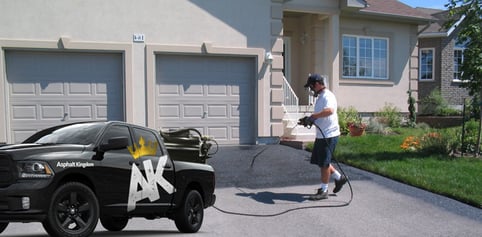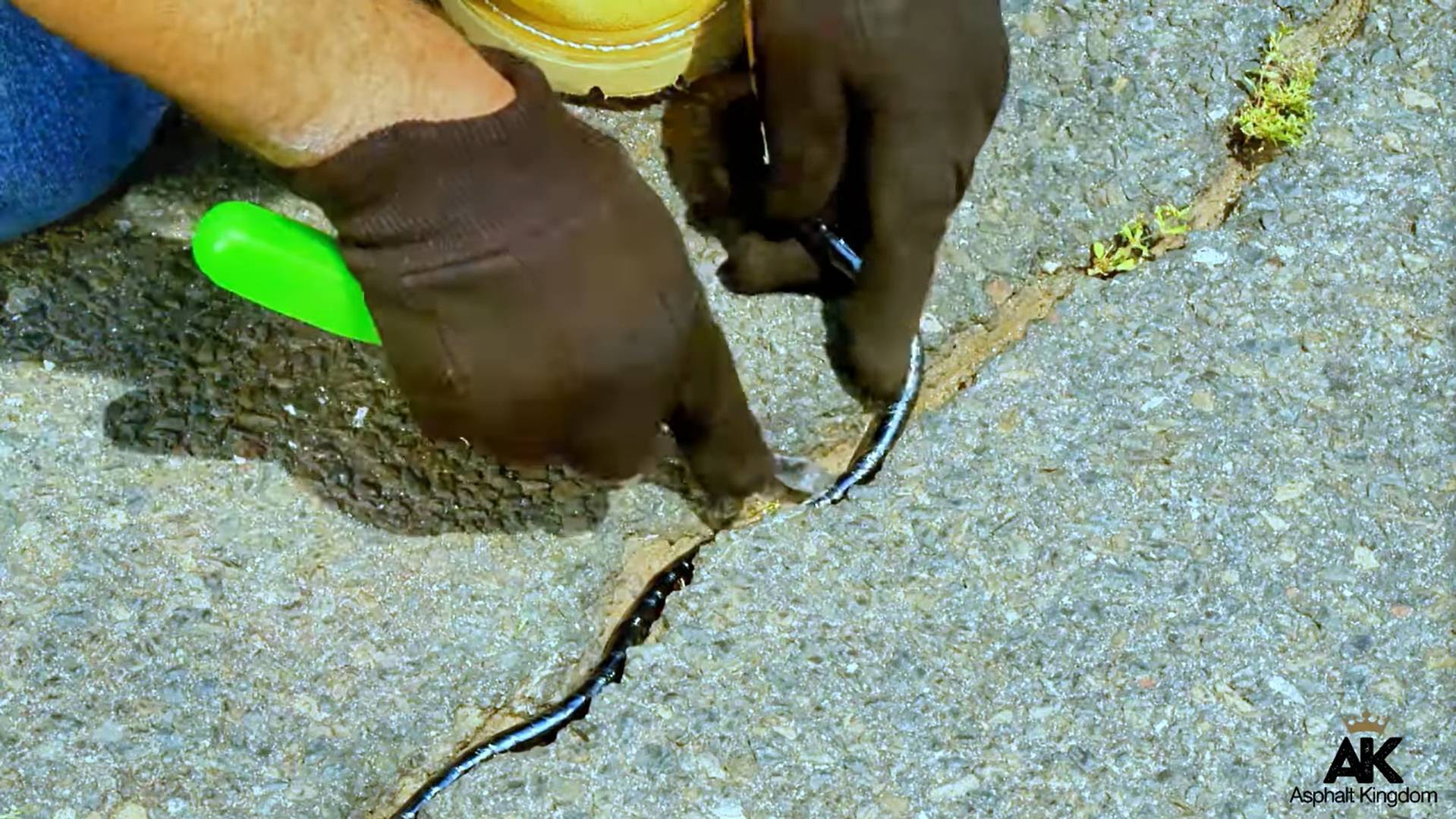Investing in an asphalt sealcoat sprayer is an excellent way to professionally sealcoat blacktop surfaces, saving significant time and up to 40% of material while doing so. The equipment might seem a bit complicated to those new to asphalt sealcoating, but this is not the case. A sealcoat sprayer operates in a relatively straightforward manner, as you’ll learn below.

Sealcoat sprayer models vary slightly in features and attachments, but virtually every unit works in roughly the same way, even sharing a handful of key components.
Check out our guide to help determine which sprayer system is right for you.
First, the sealer is fed from a drum, tote, or tank.
It should come as no surprise that the asphalt sealer’s journey begins at its source—in a drum, tote, or tank. Smaller sprayers, such as the AK55, typically draw from a 55-gallon drum, and are perfect for property owners looking to save money through their own asphalt maintenance. Larger units, ideal for contractors or property owners performing bigger jobs, will more likely use a 275-gallon tote, or even 300-gallon tank.

Regardless of the sealer container, a pump, powered by an engine, is its next destination.
Similar to its source, the engine and pump combination will depend on the specific unit used and horsepower selected, but both work in tandem to ensure the sealer properly flows from its source at the correct pressure. For lasting efficiency, consider durable, cast iron pumps, rather than plastic or aluminum. With your engine and pump up and running, the sealer next travels up the hose, with excess material fed back through the return feed, for recirculation.

In the final basic operating step of a sprayer, the sealer travels through the hose and out the spray gun, or wand.
Here, the sealer is evenly dispensed and applied to the blacktop. Select the right spray tip and precision level for your job, and maintain an easy, side-to-side motion to save time and effort, and achieve the best results.
Now that you've had an introduction to basic sealcoat sprayer functions, the next step is learning how to use it.
Before you do, though, just make sure you've:
-
Checked the Oil in Your Engine & Topped It Off, if Necessary
-
Made Sure Your Engine Has Plenty of Fuel
-
Primed Your Unit for Use
You can find more information about how to properly care for your sprayer here.





-1.jpg)